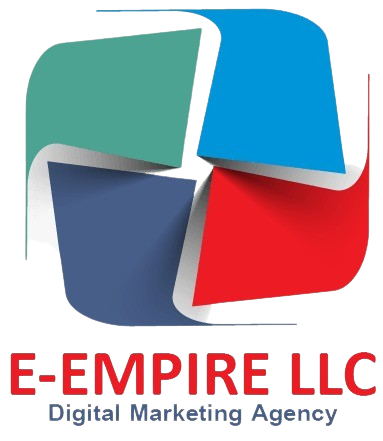Marketing has become so essential for the success of every industry. From tech giants to local bakeries. The ability to connect with your target audience in a meaningful way is important. The insurance industry is no exception. However, a new wave of innovation is transforming the way insurance products are designed, distributed, and experienced.
Insurtech utilizes technology to revolutionize insurance, offering a more convenient and personalized experience for tech-savvy consumers. This exciting potential comes with unique challenges and opportunities for insurtech marketers.
In this article we will delve into the challenges and opportunities in insurance marketing and how can startups overcome the challenges of insurtech industry.
Table of Contents
ToggleWhat is insurtech?
Insurtech is a combination of the words “insurance” and “technology.” it is also known as insurance technology or insurance tech. It refers to the use of innovative technologies like artificial intelligence (AI), big data analytics, blockchain, and machine learning to improve and revolutionize many elements of the insurance industry.
Challenges in insurtech marketing
Marketing in insurtech presents significant challenges because of its highly regulated industry and consumer concerns over data privacy. Understanding these challenges is important for insurtech marketers to plan effective marketing strategies to stay ahead of their competitors.
Data Privacy and Security Concerns
The insurance industry revolves around sensitive personal data, including financial information and health records. A study found that 60% of consumers are concerned about the security of their data when applying for insurance online.
Building trust with consumers who might be apprehensive about sharing their information online is crucial. Insurtech companies need to implement data security measures, such as encryption and multi-factor authentication and clearly communicate their data privacy practices to potential customers.
Building Trust and Credibility
Many customers don’t trust insurance companies. It becomes the biggest challneg for startups. Complex policies, hidden fees, and obscure terms and conditions can leave customers feeling confused and unsure about what they’re actually paying for.
Startups can overcome this challenge by establishing themselves as reliable alternatives by highlighting strong financial backing, industry certifications, and positive customer testimonials. Additionally, transparency, clear communication, and exceptional customer service are crucial for building trust.
Regulatory Hurdles and Compliance Challenges
The insurance industry is heavily regulated for consumer protection. These regulations vary across different religions regions and jurisdictions. Navigating intricate regulatory requirements can be time-consuming and expensive for insurtech companies. This requires a lot of understanding of local and international laws. The average application process for new insurance products takes 12-18 months.
Regulatory challenges can be tackled through collaboration with compliance experts, proactive communication with regulators to stay ahead of changes, and leveraging tech-enabled solutions to streamline the process.
Competition from Non-Traditional insurance
Another challenge that insurance startups face is the stiff competition from other Insurtech companies, as well as tech startups and fintech companies that are entering the insurance market. This competition includes both newcomers and those who have already established themselves in this market.
To overcome this challenge, the Insurtech startup should adopt innovative marketing strategies to stay ahead of the competition. Consider utilizing marketing approaches such as SEO and content marketing, social media engagement, and PPC to effectively market your products and services to potential customers.”
Educating customers
Many customers lack a basic understanding of insurance concepts and products, which makes it difficult for Insurtech companies to educate them through traditional marketing strategies about the benefits and solutions they offer.
This challenge can be overcome by utilizing digital marketing tactics and educational campaigns through various channels such as content marketing, email marketing, and social media marketing to promote your products and services. By leveraging these innovative approaches, Insurtech companies can effectively bridge the knowledge gap and connect with their target audience on a deeper level, building trust and understanding.
Opportunities in insurtech marketing
Insurtech marketing faces a lot of challenges but on the other, there are many opportunities that insurtech companies can avail to maximize their presence in the competitive market.
Leveraging Machine Learning And AI for Personalized Marketing
The insurance industry is undergoing a revolution driven by artificial intelligence (AI). InsurTech companies are leveraging AI‘s ability to analyze vast amounts of data to gain deep insights into customer behavior and preferences.
This empowers them to craft highly personalized marketing campaigns that resonate with individual needs improving customer engagement.. AI can even optimize marketing efforts in real time, adjusting strategies based on user interactions for maximum engagement. This results in increased revenues.
The Potential of Blockchain for Transparency and Fraud Prevention
The rise of blockchain technology is shaking things up in the InsurTech industry, particularly in areas like transparency and preventing fraud. Blockchain offers a tamper-proof record of all the transactions.
This allows for a more transparent exchange of information between insurers, policyholders, and other parties involved. The result is Fewer fraudulent claims and a smoother claims processing experience. This transparency builds trust with customers which is a crucial element for any successful brand in today’s digital market.
Big Data In Understanding Consumer Behaviour
Big data is another opportunity for InsurTech marketing. By analyzing vast amounts of data from social media, websites, and transactions, InsurTech companies can truly understand their customers.
This not only helps create targeted marketing campaigns and personalized products but also allows them to identify new trends and opportunities before the competition. This helps in understanding customer needs, leading to smarter marketing and a clear path to stay ahead of the curve.
Leveraging a multitude of Marketing Channels:
Insurtech companies can get benefits from a multitude of marketing channels other than a single channel. By utilizing multichannel marketing, you can use a mix of traditional and digital tactics like social media ads, SEO, Content marketing, and email marketing alongside TV commercials to reach a wider audience, convert leads faster, and create a consistent brand image across all channels. This helps maximize your marketing campaign which results in increased revenue.
Utilizing Content Marketing for Educating and Engaging with Customers
Content marketing is a powerful strategy for insurtech marketing to educate and engage with their potential consumers, By creating informative and engaging content like blog posts, videos, and infographics, they can establish themselves as experts, build trust, and guide potential customers through the insurance buying process. This approach positions them as thought leaders and helps potential customers make informed decisions, ultimately leading to a win-win for both parties.
Using SEO and SEA strategies
InsurTech companies can increase their online presence with powerful tactics of SEO and SEA. SEO optimizes websites for search engines, making them show up higher for relevant searches.
It increases the website’s organic traffic which results in increasing revenue.SEA throws in paid advertising on platforms like Google Ads. This combination ensures both long-term organic traffic and a fast track to reaching potential customers,
Social Media strategies for brand awareness
InsurTechs can use social media marketing for brand awareness and visibility. By being active on platforms like LinkedIn, Twitter, and Facebook, they can share valuable content, engage in industry discussions, and showcase customers review to build trust.
They can build brand awareness, connect directly with consumers, and even personalize their message through targeted ads. Interactive elements like polls and live videos further fuel engagement, making social media a powerful tool for InsurTech companies to build a strong online presence.
Final Thoughts
The insurtech industry is continuing its growth and innovation as the technology is getting advanced day by day and changing consumers’ behavior and expectations. This evolution brings both challenges and opportunities in insurtech marketing to engage with customers in a meaningful way.
InsurTech companies can revolutionize the insurance industry by leveraging technology to improve the customer experience. This can be achieved by staying on top of the latest trends and technological advancements, which allows one to adapt and innovate to meet the ever-changing needs of consumers. By keeping the customer at the center of every decision, InsurTech companies can overcome challenges and redefine the insurance experience for the better.
FAQs
Why marketing is important for insurtech startups?
Insurtech marketing allows startups to reach their target audience, educate them about the benefits of insurtech solutions, and build trust in their brand. This helps to increase brand awareness, lead generation, and ultimately, growth.
What role does customer education play in insurtech marketing?
Customer education is crucial for insurtech marketing. Many consumers may be unfamiliar with insurtech concepts. By explaining how insurtech works and its advantages (convenience, affordability, etc.), insurtech startups can overcome hesitation and drive adoption.
What steps can insurers take to differentiate themselves in a competitive insurtech landscape?
Insurers may stand out in the insurtech world by focusing on a specialized niche, focusing on great customer service, utilizing data for hyper-personalized products, and actively engaging with clients through educational content and transparent interaction.

